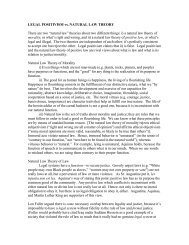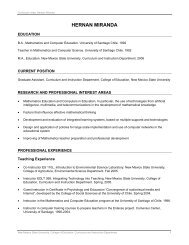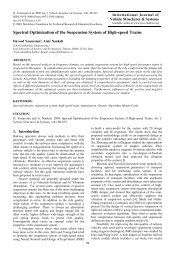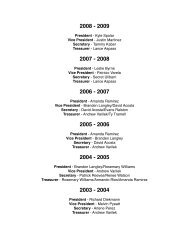Social Comparison and Body Image: Attractiveness Comparisons to ...
Social Comparison and Body Image: Attractiveness Comparisons to ...
Social Comparison and Body Image: Attractiveness Comparisons to ...
You also want an ePaper? Increase the reach of your titles
YUMPU automatically turns print PDFs into web optimized ePapers that Google loves.
<strong>Social</strong> <strong>Comparison</strong> <strong>and</strong> <strong>Body</strong> <strong>Image</strong> 647<br />
dynamics associated with the changes <strong>and</strong> expectations surrounding body<br />
image.<br />
Second, previous research has not considered the role of social comparison<br />
in the body image satisfaction of males so that gender differences <strong>and</strong><br />
similarities in social comparison have not been explored. Although the body<br />
satisfaction has typically been higher among males than among females, the<br />
body image concerns of males have reportedly increased in recent years <strong>and</strong><br />
have been linked <strong>to</strong> adjustment issues (Abell & Richards, 1996; Cohane &<br />
Pope, 2001; Lerner et al., 1991). Given the significant relationship between<br />
social comparison <strong>and</strong> negative body image in college women, it is important<br />
<strong>to</strong> evaluate the role of social comparison in the self-evaluation of body<br />
image for adolescent males as well.<br />
Third, existing research has focused primarily on models/celebrities as<br />
targets for appearance comparisons during adolescence. However, comparison<br />
targets can be selected not only from the distal world of the media,<br />
but also from everyday life. Peers are a vital part of the lives of adolescents<br />
<strong>and</strong> play an increasingly prominent role in defining social expectations,<br />
establishing identity, <strong>and</strong> evaluating self (Brown, Mory, & Kinney, 1994).<br />
Feeling accepted <strong>and</strong> supported by friends <strong>and</strong> classmates is indeed one<br />
of the central concerns of adolescents (Bukowski, Hoza, & Boivin, 1993).<br />
Furthermore, studies have indicated that students at a young age are cognizant<br />
of the linkage between conforming <strong>to</strong> appearance expectations <strong>and</strong><br />
acceptance among peers (Oliver & Thelen, 1996). During adolescence, girls<br />
have reported that they feel like they are being judged on appearance <strong>and</strong><br />
are pressured by peers <strong>to</strong> conform <strong>to</strong> appearance expectations (Merten,<br />
1996; Milkie, 1999; Pax<strong>to</strong>n, Schutz, Wertheim, & Muir, 1999; Taylor et al.,<br />
1998).<br />
Given that appearance is one of the potential routes <strong>to</strong> acceptance <strong>and</strong><br />
popularity, social comparison becomes a relevant mechanism for learning<br />
about the appearance-related social expectations among peers <strong>and</strong> for evaluating<br />
the self in terms of those st<strong>and</strong>ards. Yet peers as targets of social<br />
comparison have not figured prominently in the literature. When classmates<br />
have been distinguished as targets of appearance comparisons among college<br />
women, these comparisons have resulted in heightened body dissatisfaction<br />
(Heinberg & Thompson, 1992a, 1992b). Unfortunately, research<br />
has not focused on the frequency with which adolescent girls <strong>and</strong> boys<br />
select peers as targets of social comparison compared with models <strong>and</strong><br />
celebrities.<br />
Fourth, previous research has not specified the particular attractiveness<br />
attributes that are involved in appearance social comparisons, but have assessed<br />
attractiveness as a global phenomenon. However, reliance upon such<br />
a global approach does not permit an analysis of the relevance of various












